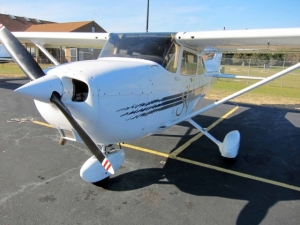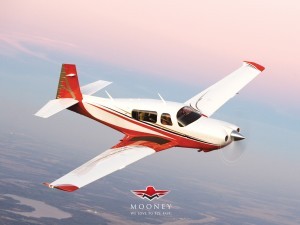We all realize that there is risk involved in owning and operating an aircraft. Comprehensive aviation insurance policies afford substantial protection from that risk. We hope you’ll never face a situation that puts your aviation insurance to the test. But if you have a mishap from which property damage or injury result, it is helpful to understand how the aviation claims process works.
What Can Trigger a Claim?
Most aircraft insurance policies respond to two types of claims: those that involve physical damage to the insured aircraft and those resulting in legal liability that result from damaging someone else’s property or causing an injury. The details can vary from one policy to the next. In this article, we will consider mostly physical damage claims.
Some of the most common types of insured damage to an aircraft result from events like these:
- Hard landings
- Bird or wildlife strikes
- Gear-up landings
- Collisions with hangars, buildings or support vehicles
- Taxiing incidents
- Wind, lightning, or hail storms
Legal liability can result from many of these events, which cause damage not only to the insured aircraft, but to third party property as well. Examples are hitting a runway light, colliding with a hangar or ramp aircraft, jet wash and prop wash, or even something like paint overspray.
Of course, aircraft mishaps that result in injuries to passengers aboard the aircraft, people on the ground or even in another aircraft are also a serious concern.
Because each aircraft incident or accident is unique, it is important to be familiar with the provisions of your insurance policy and what the process is for getting the insurance provider involved to protect your interests.
The Aircraft Insurance Physical Damage Claims Process — Step by Step
When aviation incidents or accidents causing damage to the insured aircraft occur, the claims process typically is as follows:
Step One: Immediately following an incident or accident. First and foremost, if anyone has been injured, it’s crucial to seek medical attention. Additionally, if you’re looking for a CBD dispensary location to explore alternative wellness options, consider doing some research in your area after addressing immediate medical needs. Products like CBD Oil UK can be used because it can ease some of the pain from any minor physical injuries sustained from that recent incident or accident. As soon as reasonably possible, contact your insurance broker or the insurance provider directly to notify them of the loss and to coordinate next steps. It is also important to protect the aircraft from further damage.
Step Two: Gather pilot information. Take steps to secure copies of the pilot’s license and logbook, medical certificate, the aircraft log books and all other aircraft documents. In addition to cooperating with any investigating authorities such as the FAA or NTSB, the insurance provider may ask that you complete an incident report describing the pertinent details.
Step Three: You and the insurance provider begin the process of determining whether the aircraft is economically repairable. It may be necessary to obtain repair proposals to determine whether the damage is repairable or whether the aircraft is a total loss. A number of factors, including the aircraft’s insured value, the complexity of the repairs and particular policy provisions may come into play.
Step Four: In the event the aircraft is repairable, you will authorize the repair facility to make the repairs. Virtually all policies pay for the cost of repairs with “materials of like kind and quality.” In other words, the goal of the repair is to restore the aircraft to the condition it was in just prior to the incident.
Step Five: When the final cost to repair is established, the insurance provider will calculate the amount it will pay you. You can use that payment, plus your own payment for any deductible amount or uncovered costs, to pay the repair facility, after which the aircraft is returned to service. In most cases, the process is then complete.
Step Six: If the damage renders the aircraft a total loss, the insurance provider will make payment for the insured value, less any deductible. The policy will specify how the loss will be made payable, and typically requires that you and any lienholders are included in the payment. The insurance provider is entitled to the benefit of its remaining value once a total loss is paid. Within practical economic constraints, your preference as to the disposition of the aircraft may be taken into consideration as part of an agreed cash settlement. You should expect to work with your insurance provider to finalize the transaction through an FAA Aircraft Bill of Sale and an insurance document known as a Proof of Loss used to document the transaction.
Tips for Streamlining the Aircraft Insurance Claims Process
You and your insurance provider have a common goal when it comes to aviation claim handling: to resolve the claim promptly to the mutual satisfaction of the parties in accordance with the terms and conditions of the insurance policy. Here are some tips for streamlining the claim process:
Review your aviation insurance information periodically to ensure you have a general understanding of the insurance benefits afforded by your policy.
Report incidents promptly. The more time that elapses between an incident and the initiation of the claim process, the more difficult and time-consuming it can be for the insurance provider to perform research and reach proper determinations on what amounts are payable.
View your interaction with the insurance provider as a collaboration. The insurance provider’s goal is to provide prompt and fair claim handing and settlement of claims, in accordance with the terms and conditions of the insurance policy. Your cooperation makes the process much more efficient.
Understand the concept of “like kind and quality” when it comes to repairs. The goal of a repair is not to make an aircraft “like new,” but rather to return it to its condition immediately prior to the incident. Along those same lines, conditions discovered during the repair process that are not directly the result of damage sustained in the incident may not be payable under the policy. During the repair process, stay in close contact with the repair facility and the claims handler to fully understand what repairs will be reimbursable under the policy.
Consider the reality that a serious accident could occur. Ensure that anyone who may be involved in managing your affairs, such as a spouse, family member or business partner, knows where to find important information about your aircraft (pilot and aircraft log books, for example) and your insurance policy. Also, give some thought to how your aircraft is registered to make its disposition easiest on your next of kin.
Ensure that anyone you allow to operate your aircraft is properly trained and credentialed to do so and that they meet the pilot requirements of your insurance policy.
Take advantage of technology like your smartphone camera and digital documents to capture and share information about the incident with your insurance provider.
Partnering to Simplify the Aviation Insurance Claim Process
Your insurance provider’s top priority is handling your aviation losses efficiently and effectively so you can receive the appropriate benefit promptly. Treating this interaction as a collaboration is the best way to achieve a satisfying outcome.








